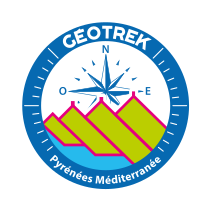La Retirada
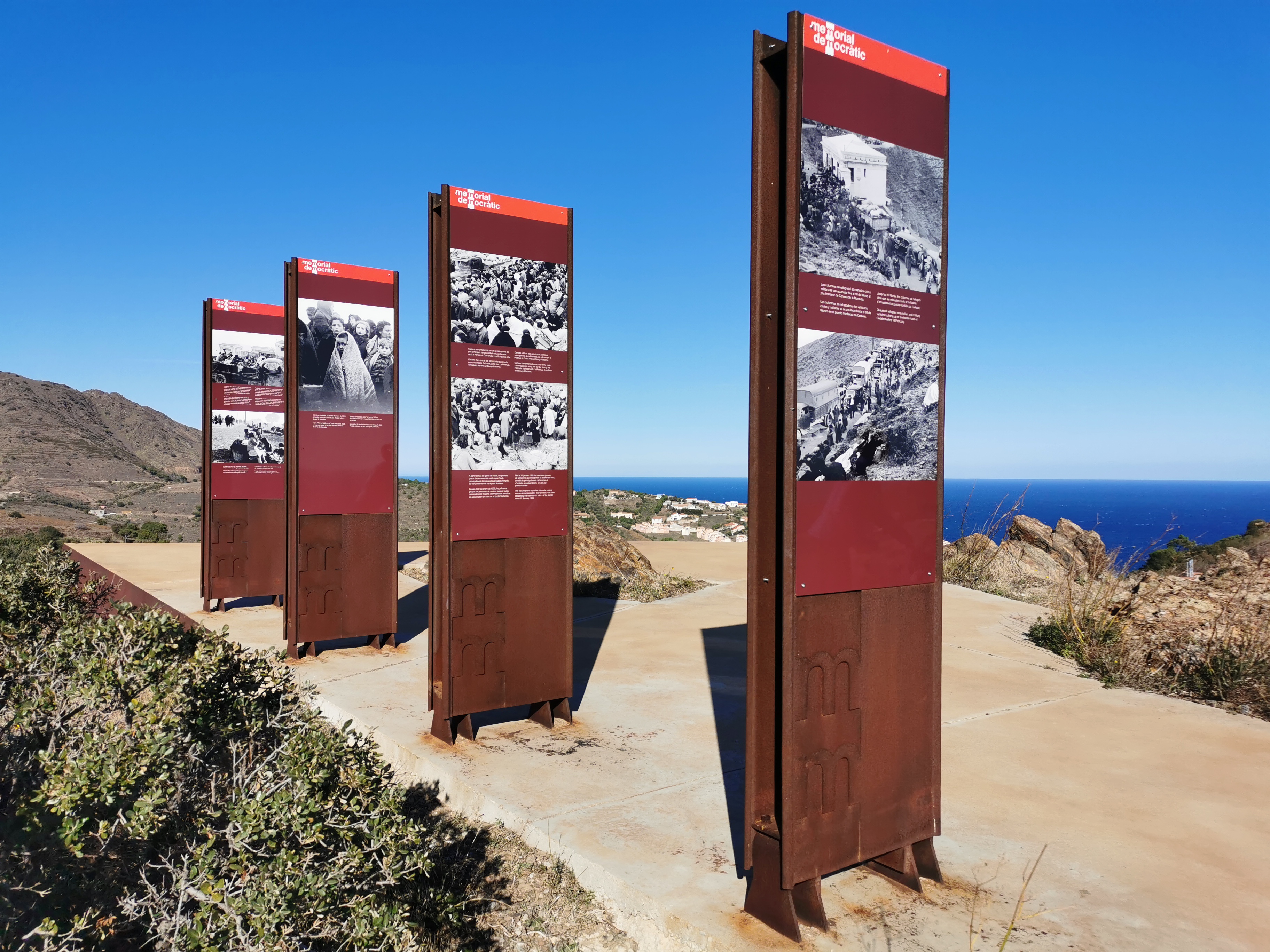
CERBERE
La Retirada
Medium
1h30
4,7km
+370m
-371m
Embed this item to access it offline
This ride is quite easy, apart from the somewhat steep climb from the village of Cerbère to the border post. It offers superb views. You can discover part of the coast from Cap Béar to Cap de Creus, the mountain, the cliffs of Cerbère and the view of the small ports of Cerbère and Port-Bou. The Retirada memorial located on the border indicates that this path was that of many expeditions fleeing Francoist Spain.
5 points of interest
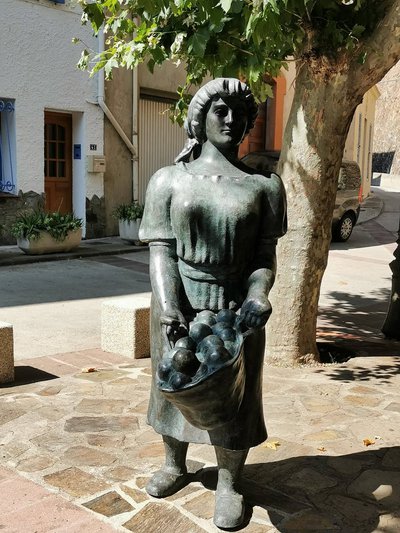
Placette des transbordeuses à Cerbère - Elisabeth coste  Small patrimony
Small patrimonyLa placette des transbordeuses
This woman, wearing a "couffe" (a traditional headscarf, derived from the word "couffin" meaning basket), is a transbordeuse of oranges. Oranges were the main product imported from Spain to France because of their low production cost. Upon arrival, the oranges had to be transferred from one train car to another due to the difference in rail gauge between Spanish and French tracks. Transbordage (transshipment) was required for all types of goods, and similarly, passengers had to change trains and stop at Cerbère. Even the Amar Circus made a stop in Cerbère, delighting children who were able to see the elephants!
There were five teams of transbordeuses, each consisting of five women employed by freight forwarders (transitaires). Although the job was physically demanding, it also had its moments of camaraderie, as the women would work together and enjoy some social interaction, escaping the monotony of everyday life.
However, by 1903, the transbordeuses demanded a 25 sous wage increase because they were working without contracts, facing job insecurity, and being called to work at any hour. They were poorly paid for their hard labor (unloading wagons weighing between 7 and 17 tons) and were compensated with vouchers, which they could only exchange for money on Sundays. Despite promises made by the transitaires, the women received nothing.
In 1906, Cerbère became the site of France's first women's strike, in the midst of a broader climate of social protests and demands for workers' rights. This historic strike marked a key moment in the fight for better working conditions and pay for women in the labor force.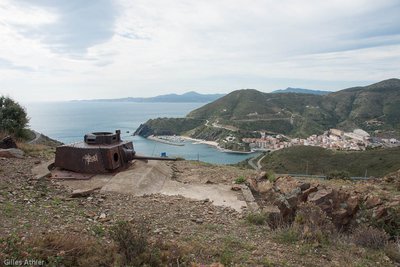
Gilles Athier  Small patrimony
Small patrimonyTurret of "Le Col des Belitres"
Turret dating from the Second World War. Constituent element of the Mediterranean fortified front made by German forces in 1942 in response to the landing in North Africa which forces the German forces to occupy the free zone.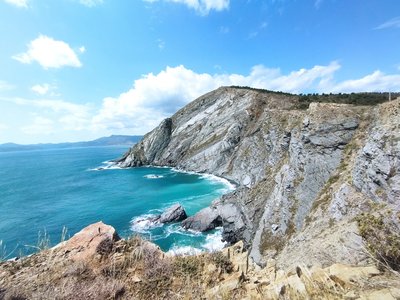
Elisabeth Coste  Geology
GeologyThe cliffs of Cerbère
The Cliffs of Cerbère are among the highest in Europe and are part of the Banyuls to Cerbère Ecological and Faunistical/Floral Natural Area (Zone Naturelle d'Intérêt Ecologique Faunistique et Floristique des Falaises de Banyuls à Cerbère). Located in the southern part of the Côte Vermeille, this protected area stretches across 7 kilometers of coastline between Banyuls-sur-Mer and Cerbère, covering 140 hectares.
This rugged coastline is oriented from north-northwest to south-southeast and is predominantly made up of schist. The cliffs are sharply cut and are followed by numerous reefs and underwater islets. Several prominent capes punctuate the coastline, including the Cap de l'Abeille, Cap Redéris, Cap de Peyrefite, and Cap Canadell, which demarcate several sandy coves. The most significant of these is Peyrefite Beach.
The summit plateaus are covered with Mediterranean vegetation, including grasslands and maquis scrubland, which are often intersected by temporary streams. This diverse and ecologically significant landscape is a haven for a wide range of plant and animal species, making it an area of great natural interest.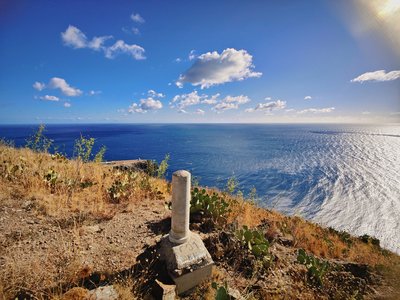
Camille Reynaud  Small patrimony
Small patrimonyboundary stone n°601
The boundary markers 601 and 601bis are part of the 602 boundary stones and crosses that delineate the Franco-Spanish border. These markers represent the last accessible land-based boundary points before the border reaches the Mediterranean Sea. The marker 602 is located in the Foradada Cave in the sea, between Cerbère and Port-Bou.
These boundary stones were established following the Treaty of the Pyrenees in 1659 and the Treaty of Bayonne in 1856, which set the current course of the border.
To reach boundary stone 601, one should follow the customs path (sentier douanier). Upon reaching the sign marking the end of the path section, continue straight ahead (following the yellow cross) rather than turning right onto the dirt track. This will bring you to the boundary stone, allowing you to experience this historical marker along the French-Spanish border.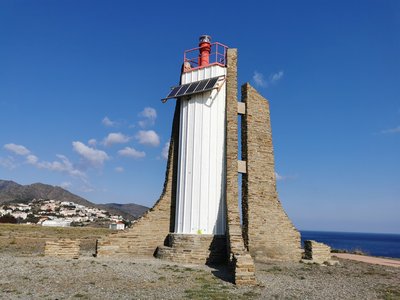
Elisabeth Coste  Small patrimony
Small patrimonySolar Lighthouse of Cap Cerbère
The last lighthouse before the French-Spanish border, this structure, built in 1982, replaced the old Cerbère lighthouse, which was decommissioned in 1980. Also known as the “Solar Lighthouse” due to its power source—photovoltaic cells—it has a range of 15 nautical miles. To preserve the landscape, all external electrical wiring was excluded from the site. Don’t miss this lighthouse, recognizable by its grey stones and tall red top.
Description
- Leave from the Tourist Office of Cerbère and join the Place de la République by turning right at the real estate agency.
- Take the street on the left into the riverbed.
- At the level of the transshiper plot, do not turn into the Ribéral tunnel and continue straight on rue Jean Barrat. Continue on the steep path that rises on the left in the scrubland to the departmental road.
- Cross the departmental road and go straight to the old tagged border post. Go up on the left and cross the departmental road again to take the path that goes up on the right to the Col des Bélitres. Go to the Retirada Memorial which is indicated.
-
Cross the road and go in front on the path that leads to the Puig Cerbère (end of the path of the customs officers in France) and the photovoltaic lighthouse of Cerbère. Be careful at the cliffs.
-
After the lighthouse, follow the road to go down to the Tourist Office of Cerbère.
- Departure : Tourist office of Cerbère
- Arrival : Tourist office of Cerbère
- Towns crossed : CERBERE
Altimetric profile
Recommandations
Provide water, walking shoes, windbreaker (whatever the time of year) and cap. Be careful above the cliffs of Cerberus. Bring back your waste.
Transport
Bus at 1€ to Banyuls, line 540 and shuttle from Banyuls-sur-Mer to Cerbère, line 546. Train to Cerbère, click here.
Access and parking
D 914
Parking :
Port parking
